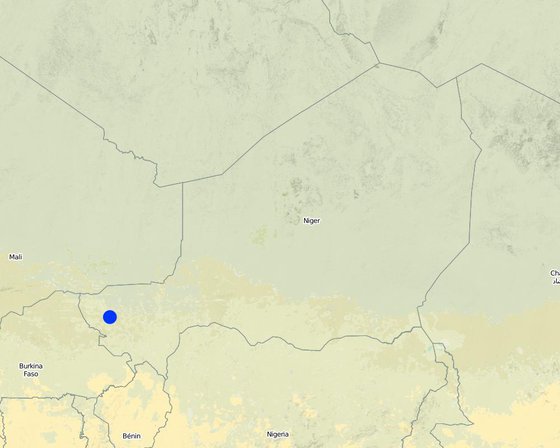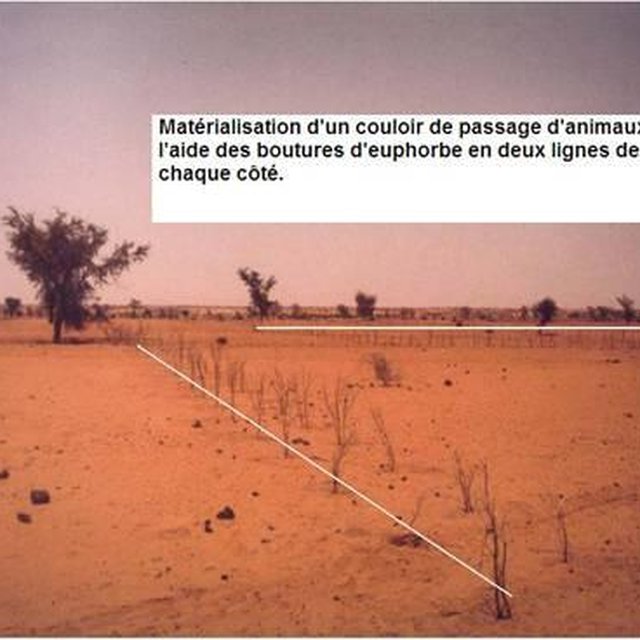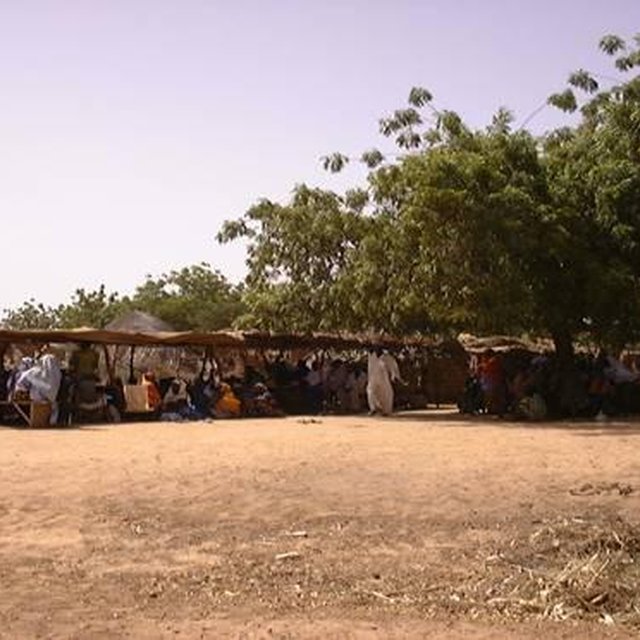



The main goal of the couloirs is the prevention of conflict between agriculturalists and pastoralists regarding the use of limited land and water resources. These conflicts are often provoked by cattle entering cropping areas. The establishment of demarcated passageways allows the livestock to access water points and pastures without causing damage to cropland. The corridors are regulated through the ‘code rural’ – a national law defining the land use rights of the pastoralists. Demarcation of couloirs is based on a consensual decision of all concerned interest groups. Internal couloirs are negotiated in a general on-site assembly involving all stakeholders (farmers, breeders, women’s groups, local authorities). For the demarcation of external couloirs the involvement of transhumance herders and neighboring villages is indispensable. Once an agreement on the course of the couloir is achieved, demarcation with stones and/or boundary planting with selected tree species is carried out by the local land users - with financial and technical assistance of the government or NGOs. Common species involve: Euphorbia balsamifera, Acacia spp. (A. nilotica; A. senegal); and Faidherbia albida. Management committees at the community level draw up regulations for the management of the couloirs (maintenance and protection of vegetation). Protection of plants is achieved through dead branches (at the initial stage), daily control by forest guards, and information campaigns. The technology is a sustainable solution to the described conflicts. As a valuable by-product the trees along the demarcation lines provide of wood and non-woody by-products.

Location: Tillabéri North, Niger
No. of Technology sites analysed:
Spread of the Technology: applied at specific points/ concentrated on a small area
In a permanently protected area?:
Date of implementation:
Type of introduction








| Specify input | Unit | Quantity | Costs per Unit (USD) | Total costs per input (USD) | % of costs borne by land users |
| Labour | |||||
| Identification of an existing couloir or definition of a new passageway | persons/day | 25.0 | 1.5 | 37.5 | 5.0 |
| Plant material | |||||
| Tree planting along boundaries (seedlings) | pieces | 670.0 | 2.05 | 1373.5 | 5.0 |
| Total costs for establishment of the Technology | 1'411.0 | ||||
| Total costs for establishment of the Technology in USD | 1'411.0 | ||||
| Specify input | Unit | Quantity | Costs per Unit (USD) | Total costs per input (USD) | % of costs borne by land users |
| Labour | |||||
| Protection of trees | persons/day | 4.0 | 1.5 | 6.0 | 100.0 |
| Plant material | |||||
| Replanting tree seedlings | pieces | 67.0 | 2.0448 | 137.0 | 100.0 |
| Total costs for maintenance of the Technology | 143.0 | ||||
| Total costs for maintenance of the Technology in USD | 143.0 | ||||
Through mutual aid in technology implementation
Code rural secretariat